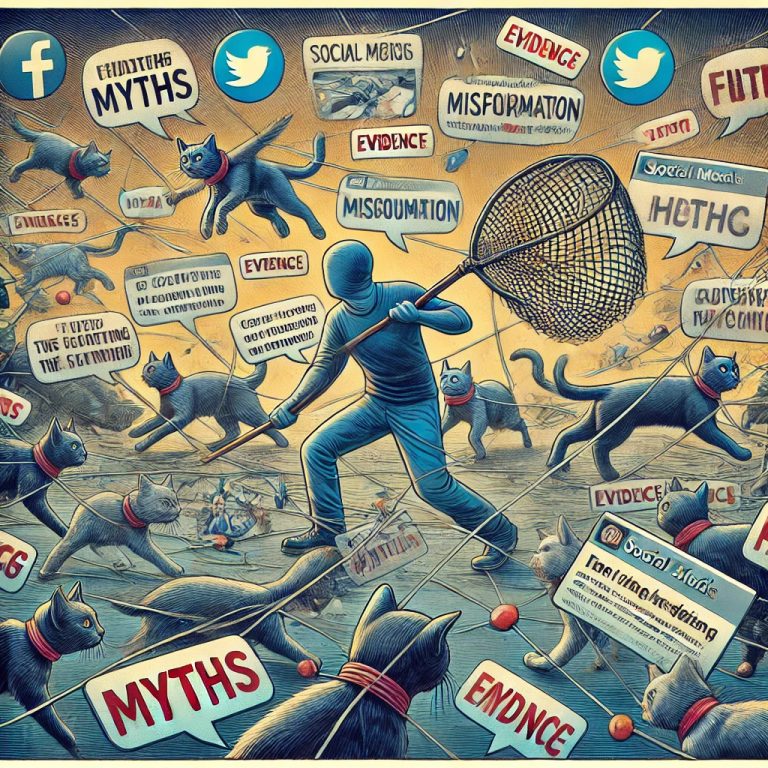The Sisyphean Struggle: Debunking Misinformation in the Age of Viral Falsehoods
The digital age has ushered in an era of unprecedented information access, yet this democratization of knowledge has come at a cost. Misinformation, often masquerading as scientific fact, proliferates at an alarming rate, spreading like wildfire through the interconnected channels of the internet. The task of debunking these falsehoods, as history and contemporary experience demonstrate, proves to be a Herculean effort, exponentially more demanding than the simple act of fabrication. Jonathan Swift’s observation in 1710, that "Falsehood flies, and truth comes limping after it," remains strikingly relevant in today’s digital landscape, where misinformation spreads virally before truth can even lace up its boots. This inherent asymmetry in the spread of information poses a significant challenge to those committed to scientific accuracy and evidence-based reasoning.
The very nature of misinformation contributes to its rapid dissemination. Outrageous claims and emotionally charged narratives exploit the human tendency towards confirmation bias, appealing to pre-existing beliefs and triggering visceral responses. These emotional triggers amplify the reach of misinformation, as individuals are more likely to share content that resonates with their worldview, regardless of its factual accuracy. As Alberto Brandolini’s law succinctly states, "The amount of energy needed to refute bullshit is an order of magnitude bigger than to produce it." This principle, visually depicted by Jono Hey’s insightful illustration, underscores the uphill battle faced by fact-checkers and science communicators.
Navigating this treacherous terrain of misinformation requires a strategic approach. Christopher Hitchens’ Razor offers a valuable tool for discerning truth from falsehood: "What can be asserted without evidence can be dismissed without evidence." This principle places the onus of proof on the claimant, demanding evidence to substantiate their assertions. In the absence of credible evidence, the claim can be readily dismissed, sparing valuable time and energy. However, navigating the digital landscape demands a discerning eye, as even seemingly credible sources can be manipulated or misrepresented.
Mike Caulfield’s web literacy framework provides a practical guide for verifying online information. His three-pronged approach emphasizes checking existing fact-checking resources like Snopes and PolitiFact, tracing claims back to their original source, and verifying information laterally by consulting multiple reputable sources. This process, while demanding, minimizes the risk of being misled by distorted or decontextualized information. It empowers individuals to critically evaluate information, identifying potential inconsistencies or manipulations that often betray the underlying falsehood.
Beyond the practical tools for verification, addressing the spread of misinformation requires an understanding of the human element. Craig Cormick’s research on science communication highlights the challenges of combating misinformation in a world where emotions often outweigh facts. He points out that factual information alone is often insufficient to persuade individuals, particularly when dealing with complex issues reduced to sound bites in the echo chambers of social media. Motivated reasoning, the tendency to favor information aligned with one’s existing beliefs, further complicates the issue.
Cormick emphasizes the difficulty of changing deeply ingrained attitudes and beliefs, especially when those beliefs are intertwined with personal identity and values. Challenging these beliefs can be perceived as an existential threat, triggering defensive mechanisms that reinforce the misinformation. This underscores the limitations of purely factual arguments in persuading individuals who are deeply invested in their existing beliefs. The challenge, therefore, lies not only in correcting factual inaccuracies but also in addressing the underlying emotional and psychological factors that contribute to the persistence of misinformation.
In conclusion, the battle against misinformation is a complex and multifaceted challenge, demanding both practical tools and a deep understanding of human psychology. While tools like Hitchens’ Razor and Caulfield’s web literacy framework offer valuable resources for navigating the treacherous landscape of digital information, the ultimate challenge lies in overcoming the human tendencies that make us susceptible to misinformation. The preference for easily digestible narratives, the power of emotions, and the tendency towards confirmation bias all contribute to the persistence of falsehoods. Combating misinformation effectively requires not only debunking specific claims but also fostering a culture of critical thinking, encouraging individuals to engage with information thoughtfully and challenge their own biases. This ongoing struggle requires persistence, critical engagement, and a recognition that combating misinformation is not merely a matter of correcting facts, but also of addressing the deeply rooted psychological and emotional factors that make us vulnerable to its allure.


